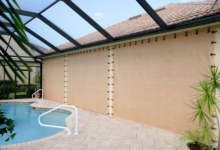
Here’s Why You Should Embrace Thermoplastic Olefin Roofs
Chances are you’ve heard of rubber roofing when considering products for your upcoming project. But have you heard of the newly-found craze of using thermoplastic olefin roofing?
Despite being rather new, thermoplastic olefin (TPO) roofing has become one of the top three best materials for roofing. Interested in learning about the benefits of using TPO roofing? Keep reading for more information!
Table of Contents
What Exactly is Thermoplastic Olefin(TPO) Roofing?
Thermoplastic olefin roofing (or TPO for short) is a sort of roofing that uses lightweight, single-ply roofing membranes. It’s a subset of polymer roofing, with modern advancements that make it usable for roofing projects. Previously, polymer membranes were way too stiff to even be used as a roofing material.
Now, it’s one of the most popular roof insulation materials thanks to technological advancements.
TPO is most commonly used for large buildings or structures with flat roofs, such as commercial buildings.
Benefits of Using TPO Roofing
So know that you know exactly what TPO is and how it’s being used, what are the advantages of using thermoplastic olefin roof membranes?
- They are incredibly easy to install thanks to their flexibility and lightweight
- Currently, TPO roofing comes at a substantially lower cost than other materials
- The material is good for saving energy
- They’re flexible and light, yes, but also incredibly durable
Alongside their durability and flexibility, they’re also highly versatile. TPO roofing makes for great replacements if other materials are too expensive or unavailable.
Things To Keep In Mind
Despite their vast number of benefits, TPO roofs come with some downsides to keep in mind.
First, they require special training in order to install them. It’s quite new, so many contractors don’t have the expertise in installing these types of roof membranes. With that being said, it’s an easy thing to catch on to and just requires the right training.
Some TPOs also have different compositions than others. The thermal expansion in many TPO roofings restricts the membrane’s flexibility to a certain extent, again due to the differences in how they were made. Bonds between the membrane and substrate can diffuse if some elements of the membrane aren’t compatible with one another.
To make the most of your roofing experience, keep a handful of questions to ask your contractor if you need extra reassurance.
Finding An Installer
Finding a good roof contractor can prove to be a challenge, as many of them might not have the products or services you’re looking for. To add to that, you also have to weigh the cost of roofing and installation time between different contractors.
We’d recommend using this article as a guide to determine what type of roofing works best for your situation. If you find yourself wanting to use TPO roofing, the best bet would be to look for contractors who specifically specialize in TPO roofing.
Next, you’ll want to compare costs between different contractors. Get a few quotes and read some reviews. From there, you can easily determine what contractor is best for you.
If you happen to be in Round Rock, TX, we recommend you check out Kangaroof for your roof in Round Rock. They’ve been in the business for years and have earned not only major trust in the field but also the title of The third-largest installer of GAF-warranted roofs in Austin.
More About Home Renovation
What are your thoughts on thermoplastic olefin roofing? Does it sound like something you’re interested in? With the increase of people using rubber roofing, it’s definitely something you should consider if you’re looking for roofing materials for your new project!
Need some more advice or information on construction management? Head on over to the lifestyle section of your blog to read more!








